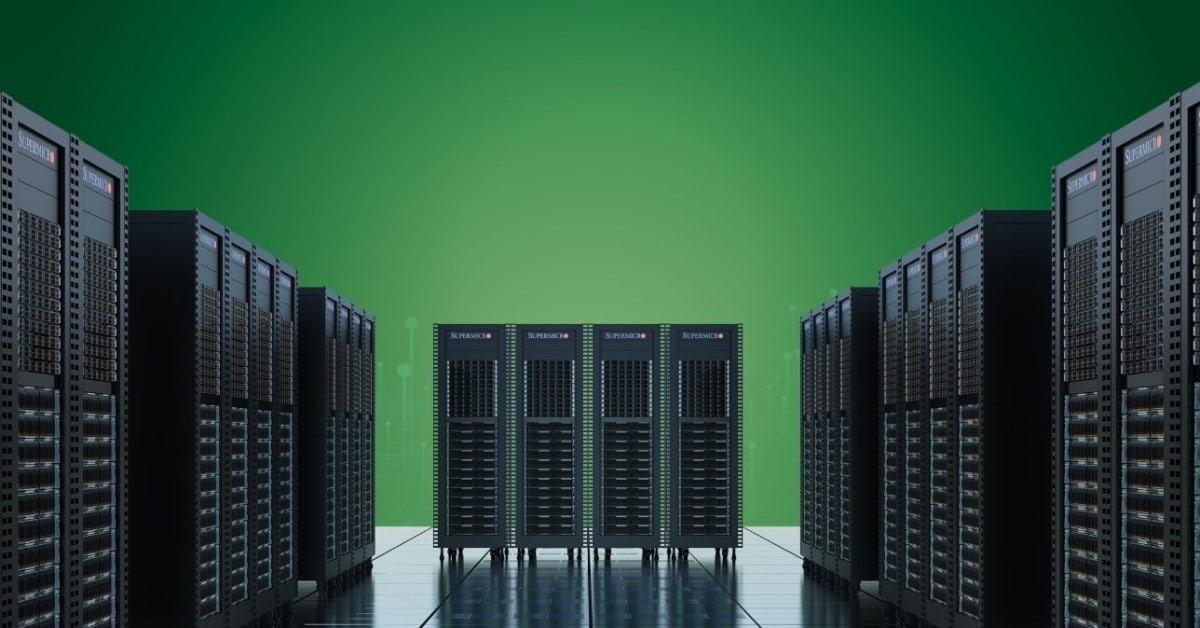Green Computing at Scale – Interview Recap
The Green Computing at Scale webinar held on November 3rd, 2022, discussed the breakthrough technologies that Intel and Supermicro have done to slash greenhouse gas emissions, as well as save operating expense (OPEX) by moving to energy-efficient (green) technologies, while still using the best possible asset utilization to provide the best possible service for customers. These steps were not radical, but reasonable and affordable, and can easily be adapted into any data center.
Overview
Data centers utilize a tremendous amount of energy to operate various IT equipment. It takes a great deal of energy to power servers, storage devices, networking equipment, and related high-performance components. In addition, when you figure that the price to cool all these devices, the expense becomes even more exorbitant.
Nevertheless, data centers can be designed to be more energy efficient with power-saving solutions, liquid cooling systems, and repurposing existing equipment. This talk discusses the steps that can be taken to help improve a data center’s carbon footprint, while lowering their power usage effectiveness (PUE) by using a range of different actions.
Total cost to the environment (TCE)
Above considering the total cost of ownership (TCO) of data centers, admins should also consider their total cost to the environment (TCE). Recent breakthroughs in green technologies have produced affordable solutions and processes to show that this is not only good for the environment, but good for reducing OPEX. The main goal when considering TCE is to use the least amount of electricity possible, which will lead to a reduction in the amount of greenhouse gas emissions.
Conserving Water
Traditional cooling systems required massive amounts of water and were an enormous expense. Conventional methods of using fresh water for heat exchange, along with chill-water cooling stations, is not only expensive but puts a strain on natural resources. Moving to recycled “greywater” costs 50% less than fresh water. This action helps cut costs and reduces the environmental impact. In addition, using an adiabatic cooling system slashes water waste. In general, this system transfers heat from one medium to another without an actual exchange of mass.
To put water usage into perspective, a traditional 5-megawatt data center requires 44 million gallons of fresh water every year. There should be the responsibility by all companies to eliminate fresh water waste, considering the drought facing many regions in the world.
Reducing Energy Usage
Extending IT equipment lifecycle is a key component to reducing energy usage. For example, the various components of a server do not need to be upgraded at the same frequency as the CPU or DRAM, so the fans and power supplies can last longer (for a number of generations of CPUs and other electronic components) and do not need to be replaced. The same can be said about networking equipment. In addition, consolidating lightly used servers and considering rack space usage can help reduce energy usage. For example, most servers rarely run near capacity, and removing even a single server can save up to $500 in energy costs.
Summary
In summary, Intel and Supermicro are committed to creating and running green data centers to provide tangible benefits for both the environment and operating expenses. Taking a rigorous, holistic approach to the design and operation of a data center helps address cooling, energy consumption and e-waste.
